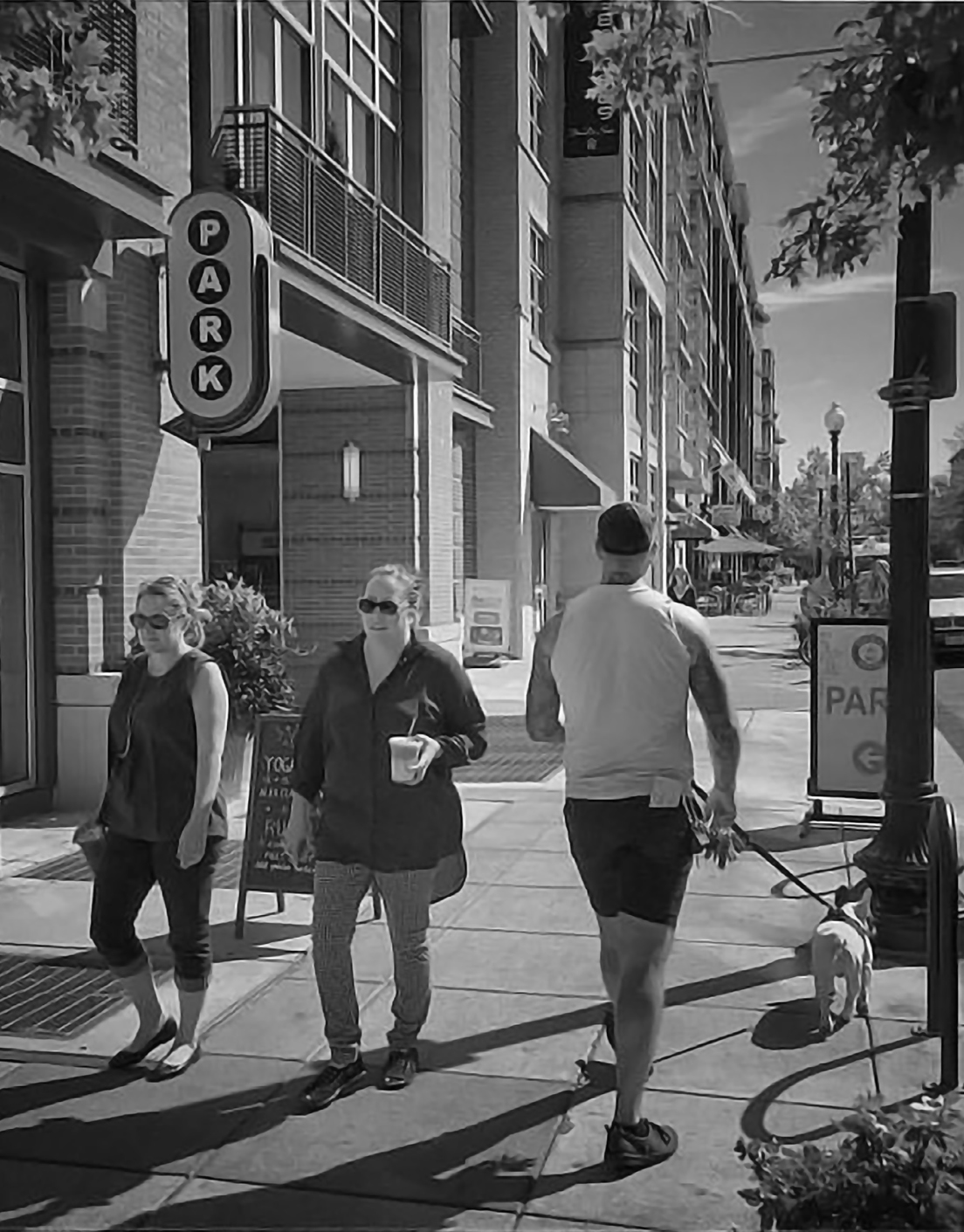…Along an Avenue, Urban Greenway or Multi-Way Boulevard there is a need to provide for Walkable Multi-Mobility.

__Problem-statement: There are many potential conflicts between pedestrians and other forms of movement, as well as potential conflicts between pedestrian needs and the needs of adjacent building users.__
Discussion: Along streets, pedestrians need ample space to walk, and to pass other pedestrians who are walking in the other direction or standing briefly. This pedestrian travel zone will vary depending on the population of the area, but in general it is a minimum of 1.5 meters, or approximately 5 feet. More ideally it is at least 3 meters, or 10 feet. In addition, there is a need to accommodate seating areas and commercial elements such as planters and signage, which generally require another 1.5 meters or 5 feet. Finally there is a need for a zone for street trees, light poles and other elements, which require approximately 1.5 meters or 5 feet. Altogether, the space for the pedestrian right of way should be at least 4.5 meters or 15 feet, and more typically 6 meters or 20 feet, not including any additional yard space for adjacent buildings.
There is also a need to accommodate bicycles, which can pose dangers to pedestrians. The best way to do both is to have a separate travel lane for bicycles at a separate grade, between the pedestrian area and the parking zone, or other protective zone between bicycles and vehicles.
In low-speed street areas — typically those with speeds limited to 30 kilometers per hour, or about 20 miles per hour, the bicycles can travel safely in the vehicle lanes.

The distinct zones of a walkable streetscape.
Do not neglect a pedestrian’s psychological need to feel safe from vehicles, even slow-moving ones. This requires careful design of the curb, with an appropriate height, or sometimes the use of attractively designed bollards. On-street parking can also be helpful — see Avenue.¹
__Therefore: Assure that every streetscape along an avenue, greenway corridor or multi-way boulevard is walkable, by providing adequate width for pedestrian travel (typically at least 3 meters, or 10 feet) in addition to space for seating, and space for planting and light poles. Provide psychological (and actual) protection from dangerous fast-moving traffic.__

Line the streetscape wherever possible with a Perimeter Building, and elsewhere place pedestrian-friendly visual elements such as trellises, pergolas, vegetation and other attractive screens. Provide Human-Scale Detail including architectural and urban elements, along the length of the streetscape. …
notes
¹ Our colleague Vikas Mehta has done leading research on walkable street design and its psychological dimensions, for example in Mehta, V. (2008). Walkable streets: Pedestrian behavior, perceptions and attitudes. Journal of Urbanism, 1(3), 217-245.
See more Public Space Patterns